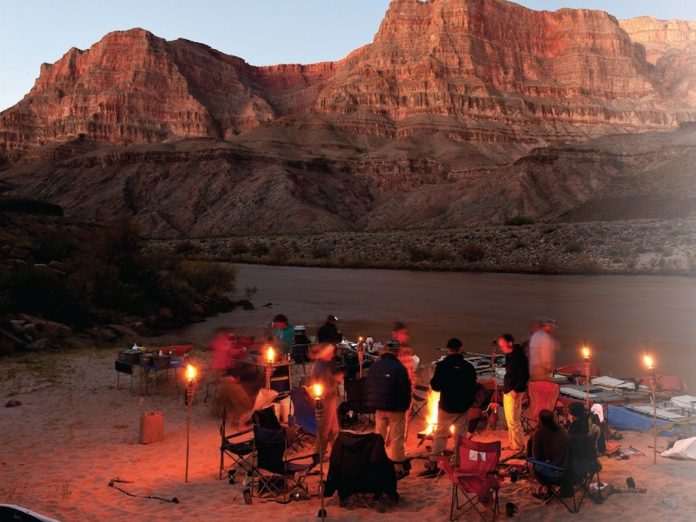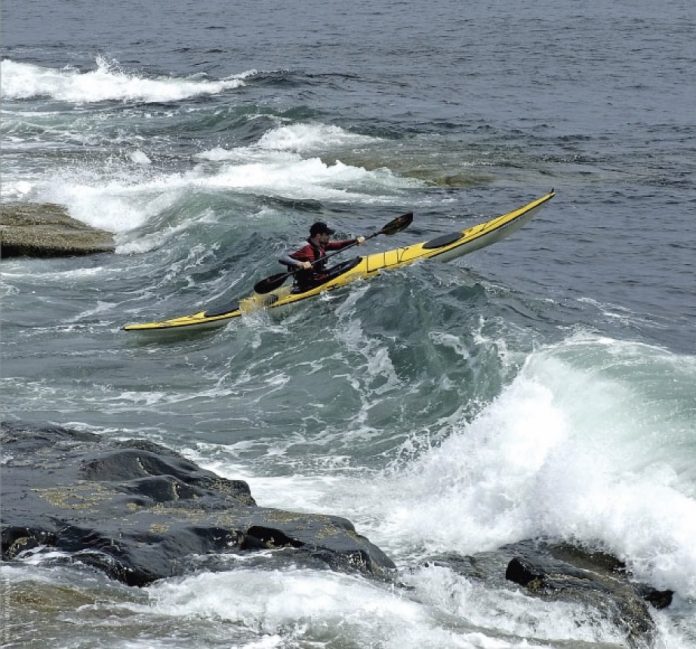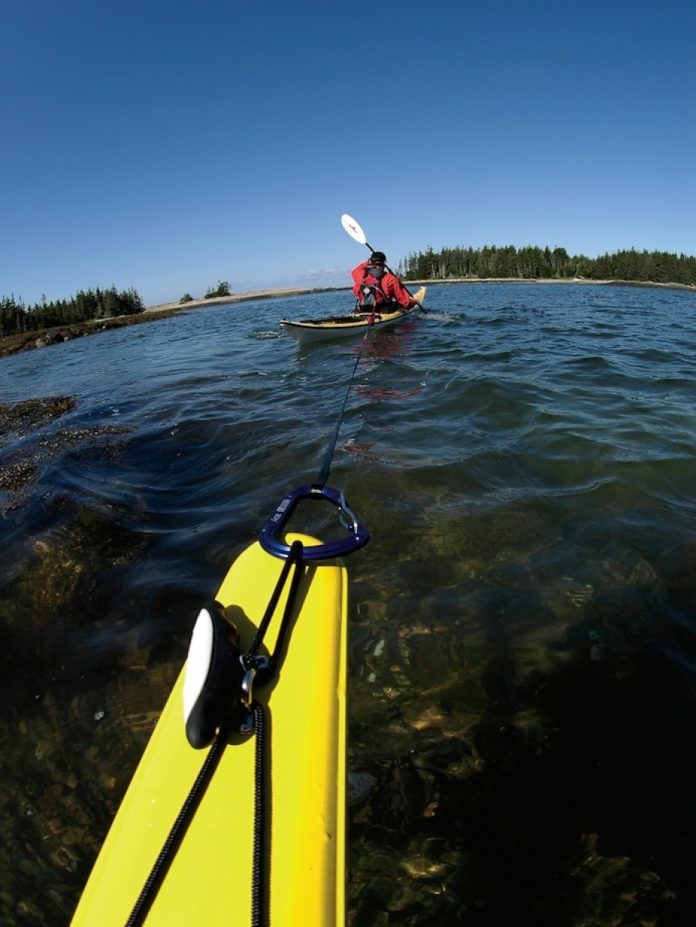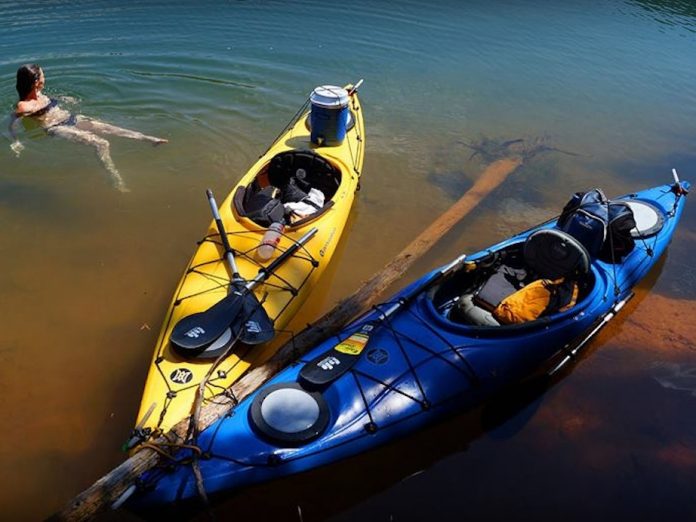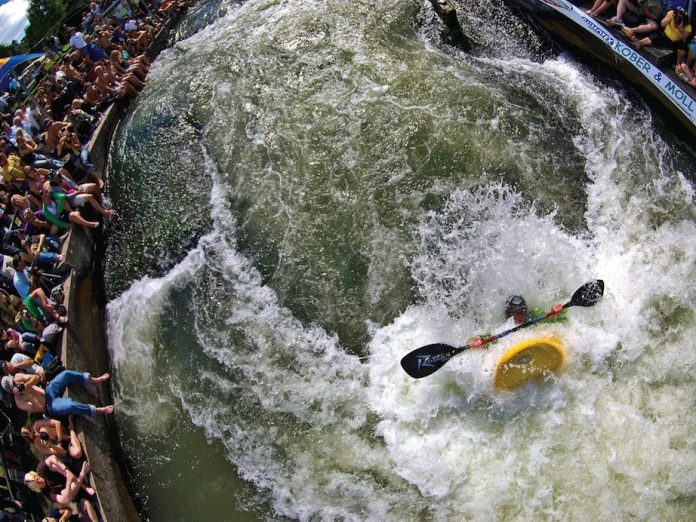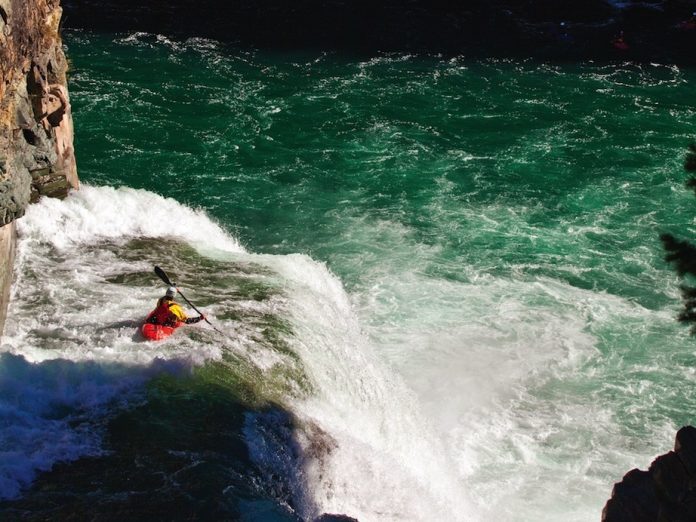Eddy turns are the foundation for paddling in current, enabling you to enter and exit river and tidal currents safely. Unlike rivers, tidal rapids change speed constantly and change direction every six hours or so. But tidal currents have the same features and require the same paddling skills as rivers. The eddy turn combines the stability of the trusted low-brace sweep turn with the three basics of controlling your boat in current— angle, speed and tilt—allowing you to go from paddling downstream in the current to facing upstream in an eddy or vice versa. When you get it right, the opposing currents of the eddy line do most of the turning work, resulting in effortless, exhilarating and snappy eddy turns.
Reading the Water
Tidal rapids are caused by constrictions or obstructions in the path of rising or falling tides. As the main current flows past obstructions such as rocks, islands or points, sheltered areas known as eddies are formed. In French, eddies are called contrecourants, which is exactly what they are—counter to the main current. Water flows upstream behind an obstruction to fill in an area that the main current is passing by. The dividing line between the main current and the eddy’s more subtle upstream flow is an area of turbulence called an eddy line. To paddle safely and smoothly into the main current from the shelter of an eddy, or leave the main current and enter an eddy, we must cross the eddy line using an eddy turn.
Getting Ready
The eddy turn is basically a low-brace lean turn performed as you cross the eddy line. Begin by learning and practising the low-brace turn in flatwater until you get the timing and feel comfortable tilting the kayak. (See Adventure Kayak V3 I2 online for a description of this technique.) Then choose an area with mild currents, say one or two knots, and ensure that the area downstream is clear of obstructions and hazards in case you happen to swim. Designate a rescuer to wait at the downstream end of the eddy to help swimmers get back into the eddy. Wearing a helmet protects your head if you flip in shallow water.
Eddy Turns—Angle, Speed, Tilt
To “peel out” of an eddy into the current, position yourself at least a few paddle strokes back from the top (upstream end) of the eddy, with your bow at an angle of about 45 degrees to the eddy line. This is called “setting your angle,” and the amount of angle depends on the speed of the current—faster current, less angle; slower current, more angle. If you cross the eddy line with not enough angle, you can end up stalled on the eddy line, or out in the current facing upstream. If you leave the eddy with too much angle, say 90 degrees to the eddy line, you will most likely be spun around on the eddy line instead of turning out into the main current.
Next comes speed. You’ll want to cross the eddy line with speed to minimize the time spent exposed to both currents. Entering into stronger currents usually requires more speed. With your angle set, paddle aggressively toward the eddy line and just as your bow crosses into the main current, do a sweep stroke to give a final burst of speed and initiate the turn.
As you cross the eddy line, you’ll need to tilt downstream. Just like riding a bike and just like practicing your low-brace lean turn, you must tilt your kayak into the turn. Shift your weight to your inside butt cheek while simultaneously lifting your outside knee. To add stability in your eddy turns, place a low brace behind you with the paddle shaft at a 45-degree angle to your kayak.
Tilting does two things: it improves the shape of your boat in the water for turning; and it lifts the upstream edge of your kayak away from the oncoming current. If you don’t lean enough, the main flow piles up against the upstream side of your kayak and tries to flip you over. The faster the current, the more aggressive your inside tilt and the sharper and quicker the turn. Get into the habit of always tilting as much as you can.
Re-entering an eddy, or “peeling in,” is the exact same manoeuvre. Approaching the eddy from upstream, set up your angle at 45 degrees or so to the eddy line. Paddle toward the eddy. As you cross the eddy line, sweep on the outside of the turn and tilt to the inside. You always tilt “downstream” relative to the current you are entering. The current in the eddy is moving against the main current, so this means leaning into the turn again, even though this time you’ll be leaning upstream relative to the main flow.
The rush of the opposing current grabbing your bow and pulling it around is highly addictive. Like a kid, you will find yourself heading back to the top of the eddy for another eddy turn. Once you’re comfortable crossing eddy lines and controlling your angle relative to the current, you’ll be ready to master other exciting manoeuvres like ferry glides and surfing. Understanding angle, speed and tilt, you’ll begin to view idal rapids not as hazards to be avoided, but as playspots to be sought out.
This article originally appeared in Adventure Kayak magazine, Summer 2003. Download our freeiPad/iPhone/iPod Touch App or Android App or read it here.




